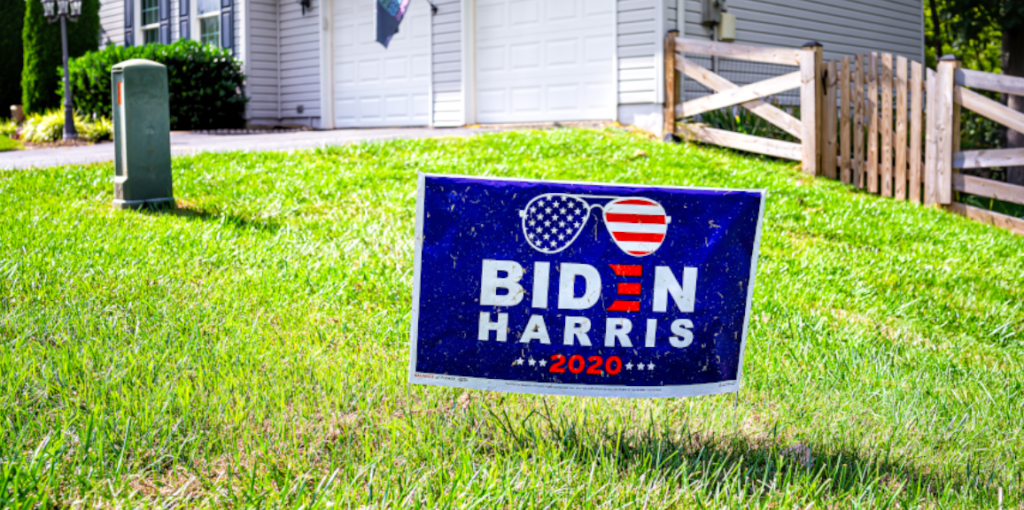As you’re likely aware if you have education debt, the United States is in the middle of a student loan crisis. More than 60% of college graduates leave school with student loans, with an average balance of $28,950 as of 2019. With so much debt, many graduates cannot afford their payments, causing them to become delinquent. According to the Federal Reserve, approximately 20% of student loan borrowers are behind on their loans.
When it comes to addressing these issues, President Donald Trump differs a great deal from rival Joe Biden. But now that Biden is the President-Elect, there will likely be significant changes to student loan policies.
Here’s what you should expect in the coming months from President-Elect Joe Biden on student loans.
How President-elect Joe Biden differs from Donald Trump on student loan debt
President-elect Biden has vastly different ideas than President Donald Trump on student loans, particularly when it comes to student loan forgiveness, alternative repayment plans, and reducing college costs. Here’s how their policies vary on these key issues:
Bankruptcy
Under the current system, it is extremely difficult to have your federal or private student loans discharged through bankruptcy.
Biden has expressed support for changing laws that would allow for forgiveness of student loans in bankruptcy, a change from his previous policies.
President Trump has not expressed opinions on bankruptcy for student loans and has not initiated any changes to bankruptcy laws during his presidency.
CARES Act
In response to the COVID-19 pandemic, President Trump’s administration passed the Coronavirus Aid, Relief, and Economic Security (CARES) Act. Under the CARES Act, federal student loan payments were suspended and interest rates set at 0%. Originally set to expire in September, President Trump signed an executive order that extended student loan relief until December 31, 2020.
It’s possible that President Trump could take action to extend the CARES Act protections before he leaves office. If he does not, Biden’s proposed stimulus plan does extend CARES Act protections for student loan borrowers, pausing payments through September 2021. If successfully passed, the longer payment suspension period and reduced interest rate would provide significant aid to federal loan borrowers.
College costs
President-elect Biden plans on instituting free or discounted tuition for some families. For families that earn under $125,000 per year, undergraduate students at public or historically Black colleges and universities could attend at no cost. Under his proposal, students could also opt to attend a community college or training program for two years without having to worry about tuition costs.
President Trump has not instituted any policies to curb the cost of higher education, and he reduced the Consumer Financial Protection Bureau’s oversight of the student loan industry.
Income-Driven Repayment (IDR) Plans
As part of President Trump’s budget proposal, he recommended changing the current IDR plans for federal student loan borrowers. Believing the current system of four different IDR plans is confusing and an administrative burden, he proposed simplifying the program and creating a single IDR plan.
Under his proposed payment plan, payments would be capped at 12.5% of your discretionary income. The repayment term would be 15 years for undergraduate students, and 30 years for graduate students. Unlike some of the current IDR plans, there would be no cap on the payments, so your monthly payment could end up higher than what it would be under a Standard Repayment Plan.
While undergraduate borrowers would likely save money under Trump’s proposal, graduate borrowers would have to pay much more over time compared to the current repayment options.
Biden also recommends changes to the IDR system. Under his proposal, loan servicers would cap payments at just 5% of borrowers’ discretionary income, and the repayment period would be 20 years. With a lower percentage of your discretionary income going toward student loan payments, you could have more money for your other expenses.
Student loan forgiveness in 2021
Under President Trump, Secretary of Education Betsy DeVos made qualifying for loan forgiveness through Borrower Defense to Repayment much more difficult, denying applicant debt cancellation requests and becoming the target of lawsuits.
In March, DeVos testified regarding President Trump’s proposed budget, which included significant budget cuts. One of the proposed changes was to eliminate Public Service Loan Forgiveness (PSLF), the federal program that cancels the loans of people who work for non-profit organizations or government agencies.
By contrast, Biden was instrumental in the past in implementing PSLF. And, it was under the Obama administration that Borrower Defense to Repayment was put into place. However, he may make changes to the program. He has suggested adjusting the program so that eligible borrowers could get $10,000 per year forgiven for up to five years.
In response to the COVID-19 pandemic, Biden has also proposed $10,000 of loan forgiveness for all borrowers, regardless of employment.
Managing student loan debt in 2021
President-elect Joe Biden has vastly different views than Donald Trump on student loans. Throughout Biden’s presidency, expect to see new policies that could affect how you manage your student loans.
However, Biden’s proposals would have to get buy-in from both sides of the aisle, and he may not be able to get all of his policies passed.
If you need help with your student loans now — or have federal loans that are ineligible for student loan forgiveness in 2021 or IDR plans — student loan refinancing can be a good solution. You can take advantage of historically low interest rates and save money over the life of your loans.
Use Purefy’s Compare Rates tool to get quotes from top refinancing lenders.















